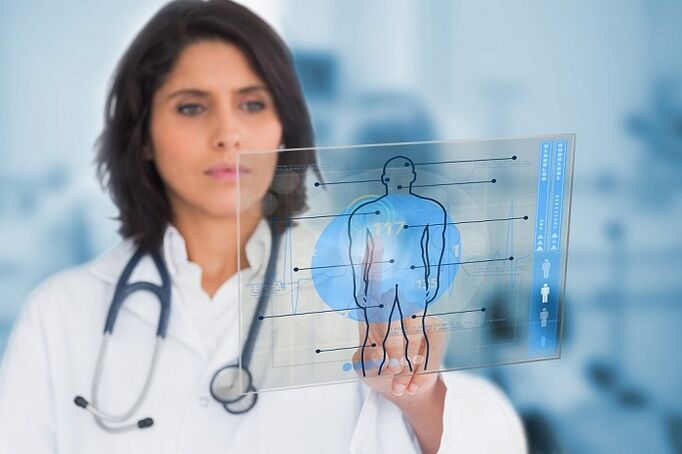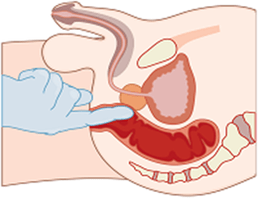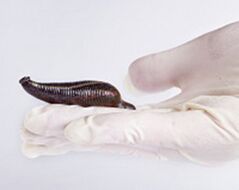Prostatitis is a common and dangerous disease that occurs with an inflammatory process in the prostate gland. Often, the disease develops as a result of circulatory disorders or infections. According to medical statistics, prostatitis in recent years has been increasingly diagnosed among men of working age. The disease is accompanied by a painful sensation during deurination and ejaculation. Manifestations of this disease have a negative impact on the quality of life of a man. Prostatitis is dangerous because of its effects. If there is no timely treatment, the disease undergoes a chronic process, which is difficult to treat. Prostatitis requires complex treatment. Consider effective treatment for prostatitis.
Basic therapeutic methods

If unpleasant symptoms of the disease appear, a man should, without delay, see a doctor for a timely diagnosis of the disease. Based on the results of the examination, the doctor prescribes treatment.
In this case, the doctor takes into account the following factors:
- the degree and form of the disease;
- the presence of complications;
- the course of the disease;
- individual characteristics.
It should be remembered that only complex treatment will help overcome prostatitis. Therefore, it is very important to comply with all prescriptions and recommendations of the doctor.
The goal of prostatitis therapy is to relieve inflammation in the prostate gland.
All methods of therapy used to combat the disease are divided into conservative and surgical.
Conservative methods include:
- drug therapy;
- taking vitamin complexes and methods to normalize the immune system;
- physiotherapy;
- physiotherapy training;
- massage;
- Spa treatments;
- hirudotherapy;
- mud therapy;
- traditional treatment methods.
The surgical method is prescribed in an advanced state when scar tissue has formed in the gland and is unable to carry out its daily functions. During surgery, as a rule, the affected tissue is removed.
Drug therapy
Methods of treating prostatitis consist of the intake of antibiotics, alpha blockers, painkillers and other medications. Consider more effective modern methods of treating prostatitis.
Antibiotic therapy
Prostatitis is usually bacterial. Therefore, doctors prescribe antibacterial drugs for treatment. This group of drugs provides effective treatment for acute and chronic prostatitis. The pharmaceutical industry offers a wide variety of antibacterial drugs to help fight the disease.
As a rule, doctors prescribe the following groups of antibiotics for treatment:
- Fluoroquinolones.
- Aminoglycoside.
- Tetracyclines.
- Cephalosporins.
- Penicillin.
- Macrolide.
For the treatment of acute prostatitis, intravenous antibiotics (generation III cephalosporins or fluoroquinolones) are usually prescribed. When the fever subsides, further treatment is continued with oral antibacterial agents. The admission period is an average of 6 weeks.
For chronic prostatitis, fluoroquinolones are usually used. The drug easily penetrates the prostate and is effective against most gram -negative bacteria, chlamydia, ureaplasma. Tetracycline is effective for suspected chlamydial infection.
For the treatment of abscesses and chronic prostatitis, caused by Proteus or Pseudomonas aeruginosa infections, sulfa drugs are prescribed.
To cure the virus that has penetrated deep inside, injections of tablets and macrolides are prescribed. If prostatitis arises as a result of the penetration of several pathogens, or tests do not help determine the type of pathogen, drugs of the aminoglycoside group are prescribed. However, due to the many side effects, this drug is not often prescribed.
With prolonged use of antibiotics, you need to support the body with ascorbic and folic acids, as well as B vitamins.
It is important to remember that the entire antibiotic therapy must be completed to get effective results and prevent relapse.
Before prescribing antibiotics, the doctor determines the cause of the development of the disease. Antibacterial drugs are only effective against bacterial prostatitis. If the disease is caused by disturbed blood circulation, then antibiotic therapy can harm the patient.
Alpha blocker
This drug is prescribed to relieve tension from the muscles of the bladder and urinary tract in chronic prostatitis.
Treatment with this agent leads to a decrease in swelling and pain relief.
Nonsteroidal anti-inflammatory drugs
This drug is effectively prescribed for the treatment of acute forms of the disease. They relieve pain and inflammation, provoke a decrease in swelling, and increase secretion production.
The drug is prescribed in the form of tablets, powders, or rectal suppositories.
Angioprotectors
The drug improves prostate capillary function, blood circulation and oxygen delivery to the affected organs, eliminating clogged processes.
5-alpha reductase inhibitor
One representative of this effective group of drugs is drugs that reduce prostate volume, relieve tissue swelling, reduce pain and restore urine flow rate.
Immunomodulatory drugs
To normalize immunity, doctors, as a rule, prescribe immunomodulatory drugs.
Drugs for the treatment of secondary immune deficiency can also be prescribed.
Hormone therapy
In some cases, the inflammatory process is accompanied by erectile dysfunction. To restore the function of the organs of the endocrine system, as well as restore an erection, doctors prescribe hormone therapy.
Use of suppositories
Rectal suppositories are effective for the treatment of acute and chronic prostatitis.
List of common medicines:
- Ichthyol candles. They have a disinfectant effect, normalize blood circulation, relieve pain.
- Suppositories with prostate extract. They relieve inflammation and edema, relieve congestion and prevent the formation of blood clots.
- Candles with belladonna. Relieves pain and inflammation.
- Suppositories for cell tissue regeneration. The use of such suppositories quickly restores the work of the prostate gland.
Physiotherapy procedures
Physiotherapeutic treatment methods have also proven themselves well. Physiotherapy consists of a variety of techniques that have recently been successfully used to combat the disease. The doctor chooses the type of procedure individually. The course of treatment has a positive effect not only on the prostate gland, but also on the whole body.
Physiotherapy procedures for prostatitis can achieve the following results:
- increase microcirculation in prostate tissue;
- increase the accumulation of drug substances in the glands;
- reduce painful sensations;
- improve urine quality;
- remove the inflammatory process;
- increase potential.

There are several methods of physiotherapy:
- Electrophoresis. The affected area is exposed to direct current with the drug.
- Ultrasound. It is considered one of the most effective methods of therapy. The glands are affected by ultrasonic waves. This procedure is not painful at all.
- Magnetotherapy.
- Magnetic laser induction therapy. The prostate is treated complex with magnets and lasers. This procedure improves blood circulation, speeds up the healing process of the affected tissue, and relieves pain.
- Laser therapy.
- Microwave microwave therapy.
- Ozone therapy.
- Vacuum therapy.
- Cryodestruction. The affected tissue is removed using liquid nitrogen.
And also used for the treatment of prostatitis:
- balloon widening. The urinary tract is mechanically expanded using a catheter that has an inflated balloon at its end;
- stenting. The procedure is also continued with expansion of the urethra. However, in this case, a stent is inserted. The latter is presented in the form of a cylindrical frame and is made of a polymeric material.
Physiotherapy methods are usually prescribed along with drug therapy to improve treatment outcomes. Such a procedure is well tolerated and has no side effects. Side effects can occur with individual intolerance.
Magnetotherapy
Magnetic fields are applied to the prostate through the skin. At the same time, the nutrition of prostate cells is improved, its protective properties are activated, and the removal of toxins from glandular tissue is accelerated. Magnetotherapy activates blood circulation and increases drug absorption.

Microwave microwave therapy
The affected prostate is directly exposed to microwave electric waves. As a result, the temperature rises in the heated area, blood vessels dilate and blood flow accelerates.
In addition, as a result of the rise in temperature, there is a decrease in smooth muscle spasm. As a result, the man has increased drainage of prostate secretions and relieved pain.
Laser therapy
During the procedure, prostate tissue is irradiated with a low -intensity laser beam. This method thins the blood, accelerates the outflow of secretions, and prevents the formation of microtrombi.
And also laser treatment enhances the body’s protective function and induces tissue regrowth. Laser therapy is prescribed as a treatment for chronic prostatitis.
Vacuum therapy
A special medical device is installed on the penis, under the influence of blood flows to the penis and an erection occurs. It is recommended to combine vacuum therapy with laser therapy. During an erection, a laser beam is directed to the penis. The latter helps increase blood flow.
Ozone therapy
For treatment, a special fluid enriched with ozone is injected through the urethra. Usually, salt is used for the procedure. Ozone therapy restores normal prostate function, has a bactericidal effect, promotes the repair of damaged cells and is considered one of the modern methods of treating prostatitis.
For the effectiveness of the procedure, it should be done daily. The duration of the course of therapy depends on the stage of disease development and 6-10 manipulations.
Treatment at home
Physiotherapy procedures are usually performed in an inpatient setting. However, there are tools that allow you to carry out treatment at home. One such device is the device, among the advantages of which should be noted durability and ease of use. With the help of a tool, the glandular tissue is exposed to a magnetic field, heat and massage is performed.
This procedure takes about 10-12 minutes and is not painful at all. For treatment, the tip of the device, which previously wore a condom, is inserted into the rectum. After the procedure, the ends are rubbed with alcohol. The duration of therapy is 15 sessions.
The use of this device is contraindicated in the following situations:
- in the acute stage of the disease;
- with intestinal bleeding;
- in the presence of stones in the prostate;
- if there are cracks in the rectum and exacerbation of hemorrhoids;
- men with genitourinary tuberculosis;
- with malignant neoplasms;
- with diarrhea;
- in a state of fever.
Before starting physical therapy, a man must be tested to find out the level of PSA in the blood and undergo a transrectal ultrasound of the prostate. Such diagnostics will make it possible to exclude oncology. If necessary, your doctor may order an MRI (magnetic resonance imaging).
Physiotherapy methods are not prescribed for the treatment of calculus prostatitis, in the presence of calcification.
Sort
This procedure eliminates the process of stagnation in the prostate, helping to get rid of toxins formed as a result of the inflammatory process.
Contraindications to massage:
- the acute phase of the disease;
- adenoma;
- malignant neoplasm;
- prostatolithiasis - the presence of calculi in the prostate;
- dry cough.

The massage is performed by a doctor. The patient uses a knee-elbow position to maximize relaxation of the pelvic muscles. The doctor inserts a finger through the anus and massages the prostate. The course usually consists of 10 sequences.
This procedure increases secretion from the glands, activates blood circulation, increases resistance to infection and accelerates the recovery of damaged tissue.
Recently, prostate massage is rarely given, as drugs are advancing and new more effective treatment methods have been developed.
Physiotherapy
Often, prostatitis is formed due to improper blood supply to the glandular muscles.
To normalize blood microcirculation, deep squats are considered effective. You need to squat with raised arms. You need to do this exercise at least 100 times, 3 sets a week.
The following exercises are also effective:
- Scissors while sitting. Do the exercise 20 times with each leg.
- Lift your legs straight while lying on your stomach. Repeat 20 times.
- Lie on your back and place your knees bent at the knees in such a way that the knees are on the face. Wrap your arms around your legs and lie there for up to 20 minutes.
- In the morning, massage the perineum for about 5 minutes.
The above exercises, along with squats, will help you cure the disease for free.
Hygiene treatment

Patients were referred to a sanatorium when prolonged remission occurred. Around the world there are sanatoriums that treat prostatitis, improve erectile dysfunction, and improve health.
As a rule, the following procedures are prescribed for treatment:
- drinking mineral water;
- physiotherapy training;
- various methods of physiotherapy;
- hirudotherapy;
- mud therapy;
- balneotherapy.
Clean air, a calm atmosphere, and a warm climate have a positive effect on the condition of the prostate gland.
Surgery
Key indications for surgical intervention:
- prostate sclerosis;
- sclerosis of the urinary neck;
- calculi glands;
- seed tubercle sclerosis.
The main surgical methods used to combat prostatitis are shown in the table.
| Method name | Brief Description |
| Transurethral resection | The operation is performed with a resectoscope, therefore, with this procedure, the risk of complications is minimal. During surgery, to relieve pressure on the urethra, the surgeon removes part of the glandular tissue or the entire prostate. Allows you to get rid of unpleasant manifestations of the disease - pain and nocturia. |
| Adenectomy (prostatectomy) | Open abdominal surgery, in which the prostate gland is removed with a surgical instrument. It is characterized by a longer recovery period. |
The operation was performed under general anesthesia.
Traditional methods
The use of folk methods to treat the disease can improve metabolic processes in the prostate gland.
Healing decoctions, infusions and tinctures are prepared from various medicinal plants. And even medicinal plants can be added to the bath.
The following recipes are considered the most effective:
- Boil licorice root. To prepare 20 g of raw material, mix with 200 ml of boiling water. Boil the mixture for about 20 minutes. Take 1 tbsp. spoon. 4 times a day. The duration of treatment is 10 days. Effective in exacerbating the disease.
- Absorption of red root. Prepare the infusion in a thermos. For preparation, pour 25 g of raw material with 1 liter of water. The mixture is injected for one hour. Drink 100 ml hot drinks instead of tea. Take the product before meals. The number of appointments per day is 3 times.
- Decoction of marshmallow roots. It must be diluted with 2 tbsp. spoons of chopped roots with a glass of boiling water. Boil for half an hour. Drink 50 ml of the drug, the total daily dose - 3 times. The duration of treatment is 15 days.
- Love. Contraindications in people with diabetes mellitus and honey allergy. You need about 10 kg of natural flowers or linden honey. It is best to add 100-200 g of honey per day instead of sugar to the tea. After a while, dehydration will normalize, the pain will disappear. After recovery, honey is recommended for prophylaxis.
- Honey with celandine. 100 g of dried herbs mixed with 0. 7 ml of boiling water. Cook the mixture for about 15 minutes. Then let the broth cool slightly and strain. Put 500 ml of honey into the drink. Store the product in a glass container in the refrigerator. Drink 1 tbsp. spoon 3 times a day. Take medicine before meals. During the period of treatment with celandine with honey, it is forbidden to drink alcoholic beverages and take any medication. In the complex, you need to take 200 ml of oat broth 3 times a day.
- Pumpkin seeds. They contain zinc, which is essential for every man. It is best to eat 30 pills daily before meals. And also raw seeds are crushed in a meat grinder and mixed with 0, 2 liters of honey. Stir the mixture well and form small balls. The latter is stored in the refrigerator. Take 1 ball 1-2 times a day, half an hour before meals. The ball should be chewed for a few minutes and not swallowed whole.
- Hazel absorption. Bark or leaves will apply. 1 tbsp. mix the raw material in 0. 2 liters of boiling water. Cover the container with a lid and let it boil for 30 minutes. Then strain the drink and drink 50 ml 4 times a day.
The above methods will help achieve long -term remission or full recovery from the disease. The main thing is to adhere to the recommendations and dosage.
What other methods are used to treat prostatitis?
For the treatment of prostatitis, the following additional non -traditional methods are also used effectively:
- Stem cell injections. The latter, penetrating into the affected glandular area, intensively divides and replaces the damaged cells. This method is prescribed for chronic prostatitis.
- Acupuncture. Therapy is carried out by activating special points. As a result, blood circulation improves.
- Hirudotherapy. His method uses leeches. With the help of hirudotherapy, the swelling of the glands is removed, blood circulation is improved.
- Chinese plaster. It activates blood circulation, relieves inflammation, increases libido, restores erections, and prevents prostate enlargement.
- Japanese medicine. They relieve unpleasant manifestations of the disease and prevent possible complications.
As well as positive feedback on forums, phytotherapy and holiday homeopathy.
The most common herbal preparations are:
- preparation based on American Sabal palm extract. The funds are characterized by anti-edematous and anti-inflammatory effects;
- preparation with African plum extract. Means preventing sclerotic and cicatricial changes in the glands.
Prostatitis is considered a dangerous disease. Lack of timely therapy can lead to irreversible consequences. Based on the results of the diagnosis, the doctor will select an effective treatment regimen individually appropriate to its price. Complex therapy will allow you to overcome the disease quickly.



























